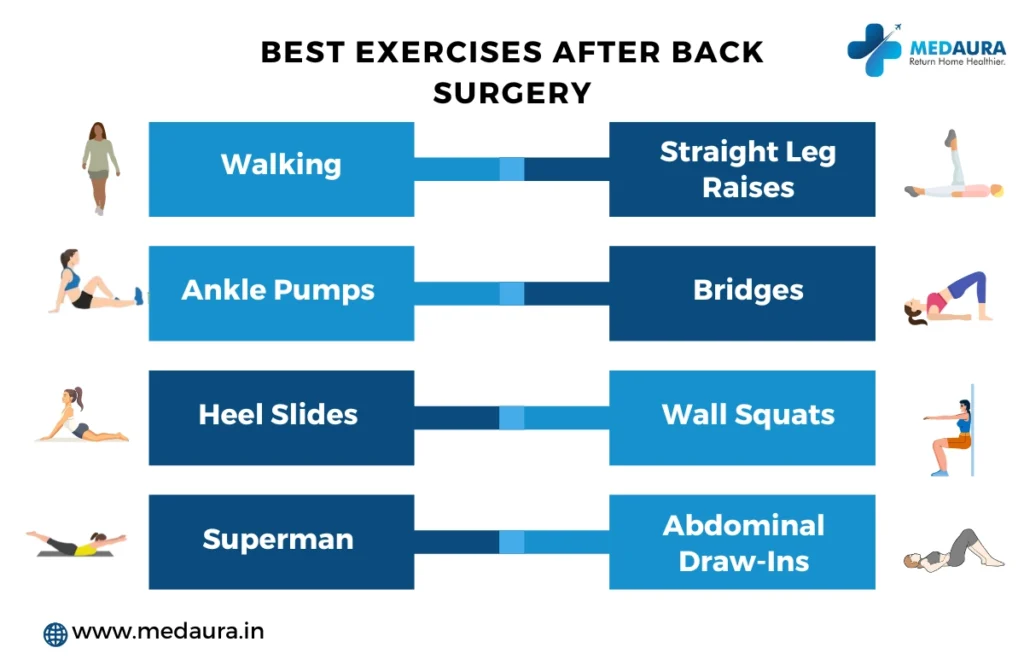Introduction
How long does spine surgery take? If you are contemplating spine surgery, this is likely one of the first questions that comes to mind. It’s understandable—spinal procedures, regardless of their complexity, can seem daunting. Knowing how long spine surgery takes can help you manage expectations and prepare both mentally and physically. But the answer isn’t always straightforward, as the duration of the surgery depends on various factors like the type of procedure, the surgeon’s experience, and your specific condition.In this blog post, we will explore the typical duration of spine surgery, the factors that can influence the time it takes, and the recovery period that follows.
What Is Spine Surgery?
Spine surgery refers to a wide range of medical procedures aimed at treating issues related to the spine. The goal of spine surgery is to alleviate pain, restore spinal function, and improve the patient’s quality of life. Conditions that might require spine surgery include herniated discs, spinal stenosis, scoliosis, and vertebral fractures. Depending on the type of surgery required, the duration can vary greatly.For example, minimally invasive surgeries such as disc removal or decompression surgery generally take less time compared to complex procedures like spinal fusion or correction of spinal deformities. It’s important to note that how long does spine surgery take varies with each individual case, and the surgery length can be influenced by a range of factors.
Factors Affecting the Duration of Spine Surgery
There are several factors that can affect how long spine surgery takes, such as the type of surgery being performed, the patient’s overall health, and the surgeon’s experience.
- Type of Surgery : One of the biggest influences on surgery time is the type of procedure being performed. For instance, a less complex surgery, such as a discectomy (removal of a herniated disc), might take only 1-2 hours. On the other hand, more involved surgeries like spinal fusion or scoliosis correction may take 4-6 hours or even longer.
- Patient’s Health : The health and age of the patient can also impact surgery time. Patients who have additional health conditions, such as heart disease or diabetes, may require additional pre-operative procedures or modifications to the surgery, which can extend the overall time required.
- Surgeon’s Experience : Experienced surgeons tend to be more efficient and faster, reducing the overall time of surgery. Surgeons with high proficiency in their specialty, especially those skilled in minimally invasive techniques, often perform procedures more quickly without compromising the quality of care.
When you’re asking how long does spine surgery take, these factors all come into play to determine the duration of the procedure.
Top 5 Spine Surgeons in Chennai
If you are looking for a qualified spine surgeon in Chennai, here are some top specialists you should consider. These surgeons are known for their exceptional expertise, and they can provide you with detailed information on how long spine surgery takes for your specific case.
Dr. Manikkavelayutham
Dr. Manikkavelayutham is a highly experienced spine surgeon, well-versed in treating both pediatric and adult spinal conditions. With over two decades of experience, he has gained recognition for his proficiency in handling complex spinal surgeries, particularly in cases of spinal deformities, trauma, and degenerative diseases. Dr. Manikkavelayutham adopts a meticulous approach to spine surgery, ensuring that patients receive the most effective treatment options with minimal risk.
- Specialties: Spinal fusion, vertebral fractures, herniated disc treatment, pediatric spine surgery.
- Qualifications: MBBS, MS (Ortho), Fellowship in Spine Surgery.
- Experience: 20+ years of experience in spine surgery and complex spinal deformities.
- Approach: Dr. Manikkavelayutham’s extensive experience ensures that patients receive tailored solutions for spinal conditions. His ability to deal with intricate surgeries has earned him the reputation of being one of the best spine specialists in Chennai.
- Location : V2, Plot 4047, 4th Main Rd, V Block, Anna Nagar, Chennai, Tamil Nadu 600040.
How long does spine surgery take with Dr. Manikkavelayutham? Generally, complex spinal surgeries such as spinal fusion can take around 3 to 6 hours depending on the complexity of the condition and the approach used.

Dr. S. Karunakaran
Dr. S. Karunakaran is a renowned spine specialist in Chennai with a wealth of experience in both non-surgical and surgical treatments for spinal disorders. His focus on minimally invasive techniques sets him apart, as these procedures offer quicker recovery times and reduced post-operative discomfort. Dr. Karunakaran is recognized for his ability to treat complex spinal conditions with precision and care, using advanced techniques to achieve optimal outcomes.
- Specialties: Disc herniation, spinal stenosis, minimally invasive spinal surgery, spine trauma management.
- Qualifications: MBBS, MS (Ortho), Fellowship in Spine Surgery.
- Experience: 18+ years of experience in spine surgery, treating both degenerative and traumatic spine conditions.
- Approach: Dr. Karunakaran’s patient-centered approach and emphasis on minimally invasive techniques enable faster healing and less post-operative pain, which significantly improves the patient experience.
- Location : V2, Plot 4047, 4th Main Rd, V Block, Anna Nagar, Chennai, Tamil Nadu 600040.
How long does spine surgery take with Dr. Karunakaran? Minimally invasive procedures typically take 1-2 hours, whereas more complex surgeries may extend up to 4 hours, depending on the individual case.

Dr. Barani Rathinavelu
Dr. Barani Rathinavelu is a highly reputed spine surgeon with over a decade of experience in treating complex spinal disorders. Known for his focus on personalized care, Dr. Rathinavelu ensures that each patient receives the best treatment options suited to their unique needs. His expertise includes both surgical and non-surgical management of spinal conditions, with a particular emphasis on minimally invasive surgery.
- Specialties: Minimally invasive spine surgery, spinal fusion, disc herniation treatment, scoliosis surgery.
- Qualifications: MBBS, MS (Ortho), Fellowship in Spine Surgery.
- Experience: 12+ years of experience in managing both common and complex spinal conditions.
- Approach: Dr. Rathinavelu uses the latest medical technologies to ensure successful outcomes, and he is highly regarded for his ability to treat spine conditions with the least invasive methods possible.
- Location : V2, Plot 4047, 4th Main Rd, V Block, Anna Nagar, Chennai, Tamil Nadu 600040.
How long does spine surgery take with Dr. Rathinavelu? Dr. Rathinavelu’s minimally invasive surgeries typically take between 2 to 4 hours, depending on the condition being treated.

Dr. L. Bharath
Dr. L. Bharath is a well-known spine surgery specialist in Chennai who specializes in treating a wide range of spinal disorders. His proficiency in both conservative treatments and advanced surgical techniques makes him a go-to expert for spine surgery. Dr. Bharath’s focus on minimally invasive techniques allows for quicker recovery and less pain following surgery.
- Specialties: Spine decompression surgery, minimally invasive spinal surgeries, sciatica treatment, spinal trauma.
- Qualifications: MBBS, MS (Ortho), Fellowship in Spine and Orthopedics treatment.
- Experience: 10+ years of experience in treating various spinal conditions.
- Approach: Dr. Bharath integrates advanced surgical techniques with rehabilitative therapies, ensuring comprehensive care for his patients.
- Location : V2, Plot 4047, 4th Main Rd, V Block, Anna Nagar, Chennai, Tamil Nadu 600040.
How long does spine surgery take with Dr. Bharath? With a focus on minimally invasive procedures, surgeries can generally be completed within 2 to 4 hours, depending on the complexity of the case. How long does it take to recover from spine surgery with Dr. Bharath? Recovery times vary by procedure, but many patients begin to experience significant improvement within a few weeks to a couple of months.

Dr. S. Vignesh Jayabalan
Dr. S. Vignesh Jayabalan is a leading spine specialist in Chennai known for his expertise in treating degenerative spine diseases, spinal deformities, and traumatic injuries. With extensive experience in handling complex cases, Dr. Vignesh is highly regarded for his precision in surgical techniques and compassionate patient care.
- Specialties: Disc replacement surgery, scoliosis correction, spinal tumor surgery, degenerative spine disease management.
- Qualifications: MBBS, MS (Ortho), Fellowship in Spine Surgery.
- Experience: 15+ years of experience in treating a variety of spinal disorders.
- Approach: Dr. Vignesh adopts a patient-centered approach, ensuring that each patient receives a personalized treatment plan based on their unique condition.
- Location : V2, Plot 4047, 4th Main Rd, V Block, Anna Nagar, Chennai, Tamil Nadu 600040.
How long does spine surgery take with Dr. Vignesh Jayabalan? For more complex surgeries, such as scoliosis correction or disc replacement, surgeries generally take between 3 to 6 hours, depending on the severity and complexity of the spinal issue. Journal of Spine Surgery: Dr. Vignesh Jayabalan is frequently published in leading journals such as the Journal of Spine Surgery, which highlights his contributions to advancing spine care.

Exercises After Spine Surgery
Exercises after spine surgery are crucial for rehabilitation and recovery. They help reduce pain, improve mobility, and strengthen the muscles surrounding your spine. After surgery, it’s important to approach exercises with caution and follow a plan that works for your individual needs. This blog will guide you through the best Spine Surgery Recovery Exercises to perform during your recovery journey. These expert-recommended exercises help improve mobility, reduce stiffness, and strengthen your back, ensuring a smoother and faster recovery. Whether you’ve had a spinal fusion, laminectomy, or disc replacement, following a structured rehabilitation plan can enhance flexibility and prevent complications. Always consult your doctor before starting any exercise routine to ensure safe and effective healing.
Which Are the Best Exercises After Back Surgery?
When it comes to exercises after spine surgery, it’s essential to choose low-impact activities that promote healing without straining your back. Here are some of the best exercises to consider:

- Walking: Gentle and effective for cardiovascular health.
- Ankle Pumps: Simple movements that improve circulation.
- Heel Slides: Help increase flexibility in the legs.
- Superman: Strengthens the back without putting too much pressure on it.
- Straight Leg Raises: Builds core strength safely.
- Bridges: Strengthens glutes and lower back.
- Wall Squats: Strengthens legs and improves stability.
- Abdominal Draw-Ins: Strengthens your core without straining your back.
What to Expect from Spine Surgery for Low Back Pain?
Spine surgery is often considered when conservative treatments such as physical therapy, medications, or injections fail to alleviate chronic low back pain. Modern surgical advancements have made spine surgery safer and more effective, with minimally invasive techniques offering quicker recovery times and reduced risks. However, understanding the healing process, potential complications, and recovery time is crucial for setting realistic expectations.
How Long Does It Take to Recover From Spine Surgery?
Recovery after spine surgery can vary widely depending on the type of surgery and the individual patient. However, here is a general idea of what to expect:
- Minimally Invasive Surgery : For surgeries like discectomy or laminectomy, patients may feel better in a few days to weeks. Most patients can return to light activities within 2 to 4 weeks.
- Spinal Fusion : This is a more complex procedure, and recovery can take anywhere from 3 to 6 months. During this period, patients will likely need physical therapy and strict adherence to post-surgery instructions.
- Spinal Deformity Surgery : Recovery from scoliosis or other deformity correction surgeries can take up to a year, although most patients start seeing significant improvement after a few months.
For how long does it take to recover from spine surgery, your surgeon will provide a detailed recovery timeline tailored to your specific procedure and health condition.
What are Complications of Spine Surgery?
While spine surgery is generally safe, it’s important to be aware of potential complications, which can include:
- Infection : Any surgical procedure carries a risk of infection. However, with proper care and hygiene, infections are rare.
- Nerve Damage : Depending on the surgery, there is a risk of nerve damage, which can lead to numbness, weakness, or pain.
- Blood Clots
Blood clots are a common risk after surgery. Patients are often encouraged to move around and perform specific exercises to reduce this risk. - Chronic Pain : Some patients may experience persistent pain even after surgery. This can be managed with pain medication and physical therapy.
Knowing these potential complications can help you prepare and understand how long does spine surgery take, as the risks can influence both the procedure time and recovery period.
Other Factors That May Affect Your Recovery After Back Surgery
Besides the type of back surgery you have, several factors can influence your recovery timeframe. These include:
- Severity of Condition and Symptoms : Patients with severe symptoms or multiple back or spine issues may experience a slower recovery. The complexity of the condition often extends the timeframe for returning to normal activities.How long does spinal surgery take to heal? Recovery can be longer in cases of severe symptoms or complex conditions, requiring extended rehabilitation and care.
- Body Weight : Excess weight can place additional strain on the spine and muscles, making rehabilitation more challenging. Weight management may be recommended as part of the recovery process.Patients with higher body weight may face slower progress during recovery, with additional time needed for rehabilitation.
- Presurgery Fitness Level : Being physically active before surgery can make it easier to regain normal functions. However, even active individuals should not expect to resume presurgery fitness activities immediately and must follow their surgeon’s guidelines.
- Presurgery Fitness Level :Being physically active before surgery can make it easier to regain normal functions. However, even active individuals should not expect to resume presurgery fitness activities immediately and must follow their surgeon’s guidelines
- Medications : Pain medications used before surgery can sometimes impact recovery. They may influence pain tolerance or slow progress during rehabilitation.How long does spinal surgery take to heal? The need for pain management, both before and after surgery, can extend recovery timelines for some patients.
- Other Health Conditions : Conditions such as arthritis, muscle strain, or inflammatory disorders like ankylosing spondylitis may prolong the recovery time frame. Managing these underlying conditions is crucial to optimize healing.
What to Avoid After Spine Surgery
After spine surgery, it’s crucial to avoid certain activities to ensure proper healing and prevent complications:
- Lifting Heavy Objects : Lifting anything heavy can strain the spine and hinder the healing process. It’s important to avoid such activities for several weeks or months, depending on the type of surgery.
- Twisting or Bending : Twisting motions or excessive bending can put stress on your spine, potentially leading to complications. Follow your surgeon’s recommendations to minimize these movements during recovery.
- Engaging in Strenuous Activities : Avoid high-impact sports or activities that could put excessive strain on your spine.
Following these restrictions can significantly impact how long does spine surgery take in terms of recovery, helping you return to normal life sooner.
Conclusion
How long does spine surgery take? The duration of spine surgery varies depending on the procedure, the surgeon’s experience, and your unique health condition. While some surgeries may be completed in a few hours, more complex operations can take longer. Recovery time is just as important to consider, with some patients recovering in weeks and others requiring months.If you’re thinking about undergoing spine surgery, it’s crucial to consult with a skilled spine surgery specialist. They will help you understand what to expect, how long the surgery will take, and guide you through the recovery process.
